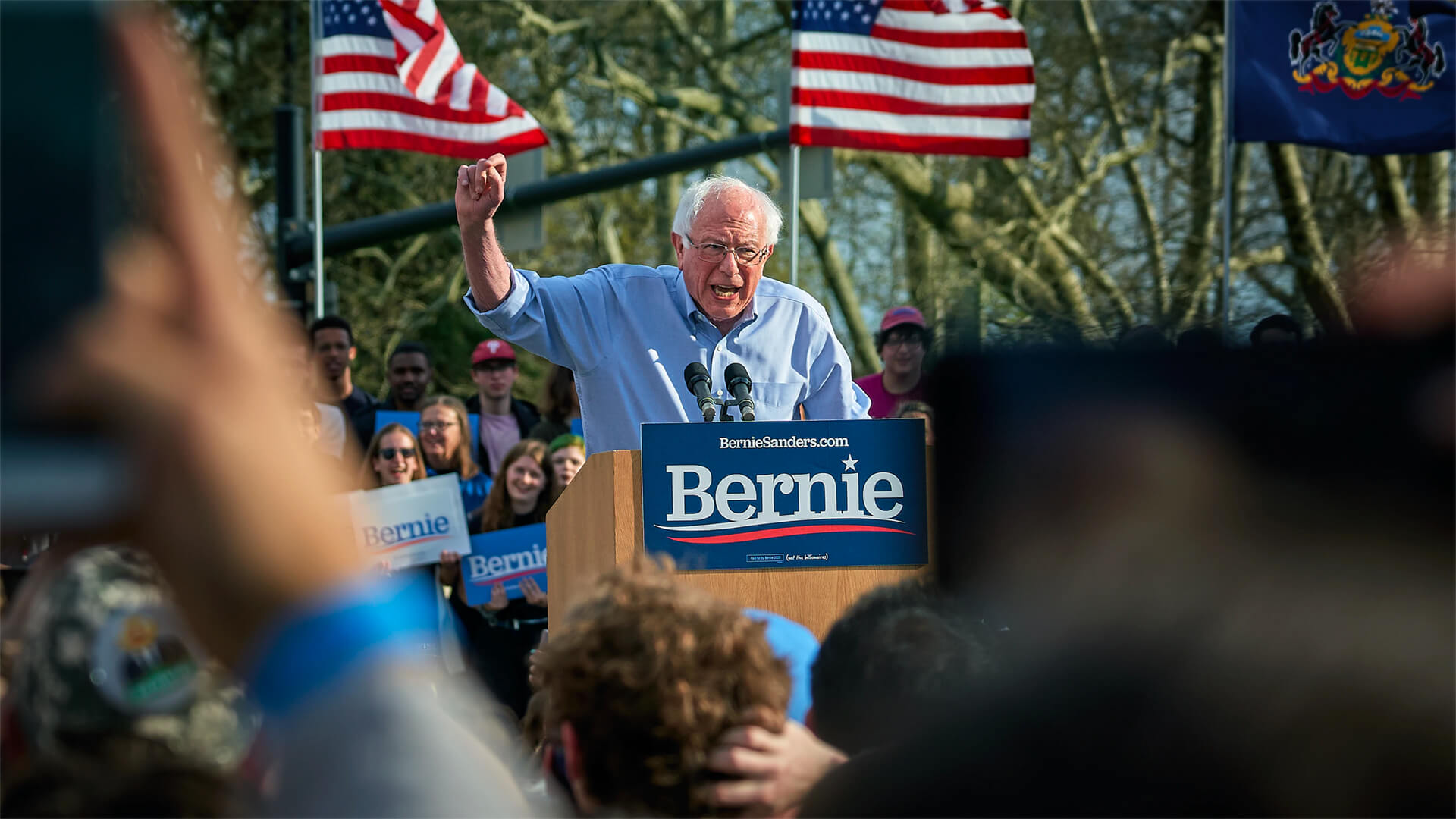Read the other installments in this series:
Life after Trump, Part I: Living in the Lightning
Life after Trump, Part II: Searching for Truth in a Flood of Freedom
Life After Trump, Part III: The End of the Republican Alliance
Life After Trump, Part IV: Building a Better Democrat…Maybe
Life After Trump, Part V: The Opening Roster
Life After Trump, Part VI: The Crisis List—Russia
Life After Trump, Part VII: The Crisis List—The Middle East
Life After Trump, Part VIII: The Crisis List—China
Normally when I give presentations, I arrange my material based on the audience’s cultural norms. Americans are manic-depressive, so I normally start with the good news to snap them away from obsessing about problems that aren’t really problems and get them thinking about the big picture. Then near the end I nail them with the bad news so they leave thinking about the actual problems as opposed to this or that conspiracy theory. With Germans I typically flip it: deepen the dourness up front (Germans are happier when they are dour) and then force them to leave in a good mood. Koreans are an emotional roller coaster from stage-on to stage-off, so for them the order really doesn’t matter.
For those of you who consider yourself Democrats…weeeell, let’s start with the bad, move on to the worse, and end with a likely post-Trump path that most of you are going to absolutely, positively loathe.
The bad: The Democratic coalition has a crack in its chassis and its failure to win the big elections is explainable, understandable, and not about to change.
Most Democrats have taken it as an article of faith for the past couple of generations that they should be the country’s natural ruling party. As the argument goes, there are considerably more registered Democrats than Republicans. Moreover, as the party of the young and the party of minorities, American demographics will steadily shift in the direction of more and more Democratic Party members.
The strategy hasn’t worked out. The Republicans have not only captured the White House about one-third more than the Democrats since the strategy was adopted (despite having about one-third fewer members), but the Democrats also haven’t been able to hold onto both houses of Congress for more than a single session at a time since the early 1900s. The “natural ruling party” has become the “natural opposition party”.

The reason for such outcome is, in a word, infighting.
Like the Republican Party, the Democrats too are a party of factions. But that is where the similarity ends. The bulk of the Republican factions – national security, fiscal, business, pro-life and evangelicals – do not fundamentally object to the pet policy preferences of their allies. That has made for a stable voting bloc.
The Democrats, in contrast, are constantly at one another’s throats. Single mothers disagree with the youth vote on subsidizing college tuition. Greens and unions spar over industrial policy. Gays and Blacks define equal rights very differently. Any candidate the Democrats put forward for office who takes a stance on pretty much any issue is guaranteed to alienate at least one faction. So yes, there may be more Democrat voters than Republican voters, but the nature of the Democratic coalition all but ensures that not all Democrats will actually show up on election day.
For the Democrats to win, they have to have one of two things going for them. First, they need a candidate who doesn’t talk policy. If the campaign can rest on charisma and personal auras, then the Democrats’ superior numbers carry the day. Second, it always helps to have someone to run against. The most successful modern Democratic campaigns have been at times when the incumbent Republican has been unpopular: think Richard Nixon after Watergate, or George W Bush during the second phase of the Iraq War, or Donald Trump in the aftermath of the hell year of 2020.
Yet even in this most recent Democratic presidential win, it was a very near thing. Despite running against the singularly dislikable personality of Donald Trump, the Democrats only won the popular vote 52:48. They lost seats in the House of Representatives. If not for Trump’s conspiracy-riddled ridiculousness in the period between the Georgia run-off elections on January 6, the Republicans would have maintained control of the Senate as well.
Between a misplaced belief in manifest destiny and factional infighting, it shouldn’t come as a massive shock that the Democrats tend to lose over and over and over.
That’s the bad. Here’s the worse: The Democrats are losing the numbers game so badly; the party could soon be kept out of power altogether.
Organized labor has been arguably the most important Democrat voting block for decades, but it isn’t a happy group. Three reasons predominate.
The first – globalization – proves that sometimes in geopolitics the conventional wisdom is true: a lot of low- and mid-skilled manufacturing capacity has decamped America.
The second – technology – is more complicated. In part unionized workers haven’t been able to keep up with relentless technological march of the Digital Age. In part new information technologies, especially more recent developments such as 3D-printing, have enabled production to relocate quickly and easily outside of unionized areas. Marry globalization to tech, and supply chains tend to get broken into many, many small pieces, while simultaneously getting scattered across the world.
For most Americans, digitization and free trade worked out great, enabling access to cheaper goods and while allowing the American workforce to focus on big value-added stuff like product design. No wonder that from 1985 through 2015 most Congressional Democrats stood shoulder-to-shoulder with business-led Republicans in pushing trade deals through Congress. But blue-collar workers? They didn’t do so well. Unemployment and opiates ensued.
Third, is an oft-overlooked cultural aspect. Outside of old-school manufacturing and coal mining, organized labor never penetrated into most of the private sector. Old-school manufacturing and coal mining had their hey-days over a half century ago, when most of the people with the “good” jobs were male and white. No other non-racial, non-gender voting block is as concentrated by race and gender. Which means as old-school manufacturing and coal jobs were lost, they were nearly invariably lost by white men.
Perhaps as important, the sort of work that most private-sector union populations engage in is called “blue collar” for good reason. It tends towards the physically demanding. At the risk of sounding a bit classist, folks who throw rivets or sling trees probably don’t have doctorate degrees or live in high-rise condos. As a rule, such occupations are filled with people (read: white dudes) who have limited experience with other cultures and who are much more grounded in traditional society of church and family. They tend in the general direction of social conservatism. No matter what the Simpsons would have us believe, there are no gay steel mills.
And so union members have been inching Republican for the better part of the past two decades. Trump’s rise presented union workers with a social conservative, anti-trade, anti-tech politician, and they went in whole hog. (I’m speaking here of private sector unions. Public sector unions are mostly white-collar workers and are an entirely different beast.)
Another faction in motion are America’s Hispanics. There’s a persistent belief on both the Left and Right that the Democrats are the party of the minorities, so Hispanic voters must choose blue and therefore the Democrats are pushing to open America’s southern border to unrestricted in-migration in order to help win the numbers game.
The reality is quite different. First-generation Hispanic-Americans and undocumented Hispanics do indeed tilt Left, especially on economic issues, but those who are undocumented cannot vote so an open border generates no immediate gains. As the generations tick by, not only does Hispanic identity become a lot less “sticky” with many Hispanics-Americans even self-identifying as white, but Hispanics’ underlying social conservatism tends to bleed through the more America-established a Hispanic becomes. And regardless of generation, Hispanics are not nearly as pro-blue as other minorities.
Democrats’ problem with this “faction” is a getting-to-know-you issue that is rooted in the very word “Hispanic”. It includes Spanish speakers such as Mexicans, Spaniards, Argentineans, Colombians and Puerto Ricans, but also people of Native descent from throughout Latin America who might have never spoken a word of Spanish in their lives. Even within each of those many categories exists bewildering diversity; for example, Cubans living in New Jersey and Florida are historically, culturally and politically distinct. (There is also something to be said about the insistence of White liberals’ increasing use of the term Latinx as a woke-ism in Hispanic messaging despite its mixed reception within Spanish-speaking communities.)
The incessantly direct mistake the Democrats continually make with this “group” is their political messaging. Pollsters tell us Hispanics regularly list economic issues and health care as their primary concerns, but the Democrats insist upon barraging Hispanics with ads about border issues and immigration. Such a racist approach speaks to what Democrats feel Hispanic-Americans “should” care about and does not go over well. Especially since the issue that Hispanic-Americans tend to be most conservative on is none other than immigration. Doubly so when it comes to the multi-generational Mexican-American communities in Texas and Cuban-American communities in Florida.
The Democratic Party seems completely incapable of accepting any of this. In contrast, Trump embraced it. The day House Democrats voted to impeach Trump (the first time), the president of the AFL-CIO labor federation was in the Oval Office to sing glory to Trump for his successful inclusion of organized labor’s concerns into the NAFTA2 treaty. The Democrats only found out when the press release happened. Just as with the unions, the Democrats have taken Hispanic-Americans for granted, knowing they are blue. Just as with the unions, TeamTrump proved far more capable of speaking to the concerns and fears of Hispanic-Americans. And so Trump captured nearly every county on the U.S.-Mexico border, in addition to increasing the Republicans’ share of Hispanic-American votes in Arizona, Texas, Florida, Georgia and Ohio.
The Democratic self-delusion that they have more votes and so are destined to win could permanently disable them very soon. Since everyone in the new Republican Partyis exclusively social conservative, it is even more cohesive than the old Republican Party which was already more cohesive than the Democrats. With the unions and Hispanics adding their voting heft to the new Republican alliance, it could well prove impossible for the new, reduced and blinkered Democrats to win high office ever again.
There are only two ways forward for the Democrats in their quest against electoral irrelevance.
The first possibility is that the Republicans might provide an opening. The old-guard Republicans – business, national security and fiscal conservatives – may attempt to recapture their party from the social conservatives in general, and the rightist populists in specific. Succeed or fail, the populist genie cannot be shoved back in the bottle and we’d see the sort of incessant infighting we’re used to seeing among of the Democrats. For more on the state of the Republican Party, see Part III of this series.
The second possibility is that the Democrats might be able to leverage the internal factional conflicts wracking both the Republicans and themselves to…trade up. This second, intriguing, possibility has three pieces:
First, the ignorant arrogance of the hard Left may prove their undoing.
The Democrats’ long held and misplaced view that they are the natural ruling party has encouraged grassroots activists to insist upon litmus tests for candidates. The idea being that no one should be allowed to run as a Democrat unless they commit publicly to a lengthening list of ideologically liberal purist positions. In most cases, such efforts end in disaster. In the much vaunted “blue wave” of the 2018 midterm elections, hard leftist Democrat candidates failed to flip a single Congressional seat blue. The effort to install correct-minded candidates in the 2020 elections nearly cost the Democrats the House and the Senate and the Presidency.
Even worse for the Democrats, the application of ideological litmus tests has started to be applied not simply to representatives and candidates, but to voters. Case in point from the 2020 election, the woke Left insisted – loudly – that anyone who did not rank-order racial justice as the most important issue of the day was racist. Telling 90+% of the American population that they are racist is a guaranteed way to lose support. Not even Americans of minority groups bought that particular line of crap: Trump received a greater proportion of Black and Hispanic votes than any Republican in modern history. Gays, the Democrat voting block that tends to police their own most vehemently, once again sent roughly a quarter of their votes to Republican candidates. (Exit polls being exit polls, take that figure with some salt. But do keep in mind most who lie to pollsters about their vote do so when they voted for the guy they aren’t “supposed” to.)
Joe Biden has many, many (oh so very many flaws), but being an ideological purist is not one of them. He has done nearly everything in his power to purge the Democratic Party of not simply the concept of wokeness in specific, but of the entire leftist wing of the party.
- In the debates Biden publicly repudiated cherished leftist positions on the Green New Deal and packing the Supreme Court.
- Biden was able to entice his old boss, Barack Obama, out of retirement to denounce wokeness and cancel culture.
- As Biden takes office, any talk of forgiving student debt has evaporated, replaced by a short-term debt payment moratorium which expires about when I expect America’s economic recovery from the coronavirus recession (September 1).
- Rumblings of Biden selecting Elizabeth Warren as Treasury Secretary – which I always found deliciously preposterous – foundered on the rocks of reality as Biden instead nominated former Federal Reserve Chair Janet Yellen. The only way Yellen could be more a member of the Good Ole’ Boys’ Club would be if she were an actual boy.
- Of the hundreds of appointees Biden has nominated, not one is a radical. (Few are what I’d call inspired choices, but none are ideological crackpots.)
Having a pragmatist holding the reins is never a horrible idea, but having a pragmatist holding the reins today provides the Democrats with reorganizational options that couldn’t have existed otherwise.
Which brings us to the second factor of a possible Democrat renaissance: the Republicans have lost a big piece of what made them Republicans.
Donald Trump’s active courting of violent extremists was bad enough. His decision to draw such people to DC on January 6 was particularly wretched judgement. But his hurling them against the Capitol, resulting in the murder of one of his own law enforcement personnel was simply beyond the pale.
Nor has the story ended there. Because Trump brought so many millions of rightest populist voters into mainstream, and because they came in from the cold not for the Republican Party, but for Trump personally, the Republican Party has been loath to expressly condemn and purge the (now-former) President. And it is that refusal to dismantle Trump’s cult of personality which provides the Biden Democrats with an opening, because no longer is the Republican Party the party of law & order.
I need to underline a couple points about political violence in America before continuing. Many – friends, family, colleagues, clients and readers – have asked me of late if what Trump did in the lead-up to the January 6 Capitol riot is any different than what Democrats have done in encouraging protests-cum-riots over the course of 2020. Yes and no.
First, the yes. There is a big difference between a Congressional Democrat urging protestors to “get in the face” of Congressional Republicans, and the president deliberately summoning the country’s most violent people to DC and literally dancing in the West Wing while they storm the Capitol. There is a big difference between sacking a Seven-Eleven and beating a cop to death on the steps of the People’s House. I firmly oppose both, but I didn’t need to rub two brain cells together to rank order them.
Second, the no. Encouraging political violence in the United States isn’t simply morally wrong, it is absolutely, monumentally stupid. Americans respond extraordinarily badly to violent actors.
Does anyone, and I mean anyone, really think dressing in black and throwing bricks at people as Antifa does has encouraged a single person in this country who was non-violent before they’d heard of Antifa to now support liberalism? Does anyone think smearing feces in halls of the Capitol would increase support for Trump? In the United States, violence not only does not generate support, but it also guarantees opposition.
I don’t know many people who deny that racism exists or that police reform isn’t worth considering, but Antifa’s actions almost single-handedly transformed the 2020 general elections from a slam-dunk win for Democrats into a nail-biter. I don’t know many people who were enthusiastic about Joe Biden becoming president, but the events of January 6 made even longtime Trumpian loyalists sigh with relief January 20 when Trump danced his way to Marine One (to the tune YMCA no less) for the last time.
TeamBiden seems to understand that political violence is a dead end. In contrast, the new Republican coalition has failed to make clear they believe the same. With law & order voters up for grabs, the Democrats have a once-a-generation opportunity to shake up the political world.
And that brings us to the final brick in what is shaping up to be the Democrats’ likely post-Trump path. The political faction that is most concerned with law & order issues is the business community…and TeamBiden has noticed.
I realize that to most the very concept of the business community joining the Democratic Party seems insane. Bear with me. Four thoughts:
First, eight years of Obamaesque inaction, four years of Trumpian irregularity, and a never-ending parade of preening, feckless wankers in Congress has prompted American businesses to take a far more active role in topics we all until recently thought of as the exclusive province of government. Civic planning. The environment. Immigration. Education. Income inequality. Racial inequality. Boardrooms across all sectors now regularly bear witness to discussions of all. The social chasm between business and the Democrats isn’t nearly as wide as it once was.
Second, the ideological chasm has similarly narrowed. One reason why the business community has been solidly Republican is because the unions and socialists have been solidly Democrat. Business leaders’ social consciousnesses may be evolving, but it would be a stretch to expect them to purposely reach for a unionized workforce or the nationalization of private property. Recent evolutions – specifically the unions taking flight for the new Republican coalition and TeamBiden’s isolation of the socialists – means the business community could become the Democratic faction that is in charge of, among other things, the party’s economic policies.
Third, it is natural for politics to evolve. The world has changed with the end of the Cold War and the dawn of the Digital Revolution and the rise (and now fall) of globalization. It would be truly weird to expect politics to be the singular thing to remain as it was. This political reshuffling isn’t America’s first, but instead its seventh. And sometimes, politics evolve back. The previous reshuffling occurred in the aftermath of the Great Depression. Before then, business leaders were…Democrats.
In my opinion, the greatest challenge to a business-Democrat merger is simple entrenched ideology. Even with the unions gone and socialists purged, there are plenty of folks on the Left who would reflexively oppose such an alliance. Nor does the age of the Democratic leadership suggest much enthusiasm for the idea. Not only Biden, but the Speaker of the House and the incoming Senate Majority Leader are all over 70. That’s a bit late in life for intellectual contortions.
But that actually brings me to my final point, and the reason I think the businesses community joining the Democratic Party faces better than even odds: Biden has no personal ideology. Throughout his career he has reinvented his views based on whatever political winds have been blowing at the time. That makes him free of principles, but heavy on pragmatism. The business community is too important to not participate in a political party, and they are more than willing to pay their way. Money alone cannot solve most problems, but there are precious few problems that money cannot at least help ameliorate. Admitting as much is about as pragmatic as one can get.
I don’t know if Biden is what the country needs. He utterly lacks leadership or management experience, so I have even less upon which to base a forecast than I did for Trump four years ago. We’ll find out soon enough. But I’m pretty sure that if the Democrats’ goal is to actually stay in power, Biden’s pragmatism is exactly what his party needs.
Coming soon:
Life After Trump, Part V: The Crisis List
If you enjoy our free newsletters, the team at Zeihan on Geopolitics asks you to consider donating to Feeding America.
The economic lockdowns in the wake of COVID-19 left many without jobs and additional tens of millions of people, including children, without reliable food. Feeding America works with food manufacturers and suppliers to provide meals for those in need and provides direct support to America’s food banks.
Food pantries are facing declining donations from grocery stores with stretched supply chains. At the same time, they are doing what they can to quickly scale their operations to meet demand. But they need donations – they need cash – to do so now.
Feeding America is a great way to help in difficult times.
The team at Zeihan on Geopolitics thanks you and hopes you continue to enjoy our work.








